Events
| Name | organizer | Where |
|---|---|---|
| MBCC “Doing Business with Mongolia seminar and Christmas Receptiom” Dec 10. 2025 London UK | MBCCI | London UK Goodman LLC |
NEWS

UN to assist in organization of COP17 to be held in Mongolia in 2026 www.akipress.com
The United Nations will support the organization of the 17th Conference of the Parties (COP17), which will be held in Mongolia in 2026, GoGoMongolia says.
Minister of Environment and Tourism B. Bat-Erdene held a meeting with Executive Secretary of the United Nations Convention to Combat Desertification Ibraham Thiaw on December 3.
At the meeting, Executive Secretary Ibraham Thiaw conveyed the President's intention to visit Mongolia in 2024, expand cooperation and provide all-round support to preparations for COP17, which will be held in Ulaanbaatar, Mongolia, in 2026.
The Mongolian side spoke about issues of grasslands and Gobi steppe areas and yellow dust storms as priorities, and advised on the effectiveness of demonstrating leadership in international cooperation.
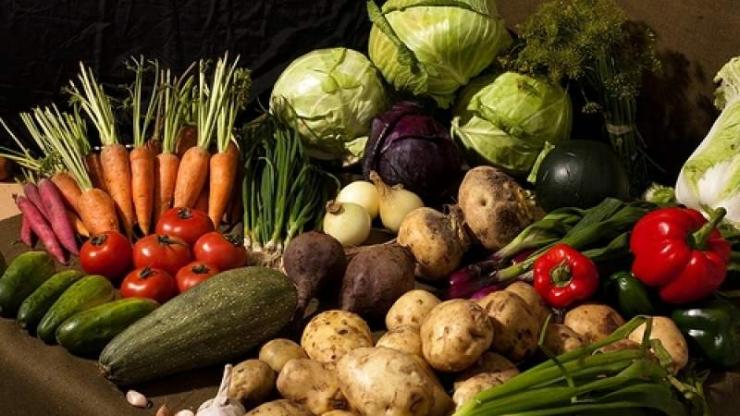
Mongolia's vegetable production hits record high www.xinhuanet.com
Vegetable production in Mongolia has reached 183,000 tons this year, a record high, the country's Ministry of Food, Agriculture and Light Industry said Wednesday.
The output can cover 85 percent of the domestic needs, the ministry said in a statement.
In addition, the country has harvested a total of 434,000 tons of wheat, up 8 percent from last year, said the statement.
Mongolian President Ukhnaa Khurelsukh has proposed to launch a "food supply and security" national campaign to develop agricultural industry clusters and establish food production complexes, in order to fully secure the domestic supply of food and become a food exporter.
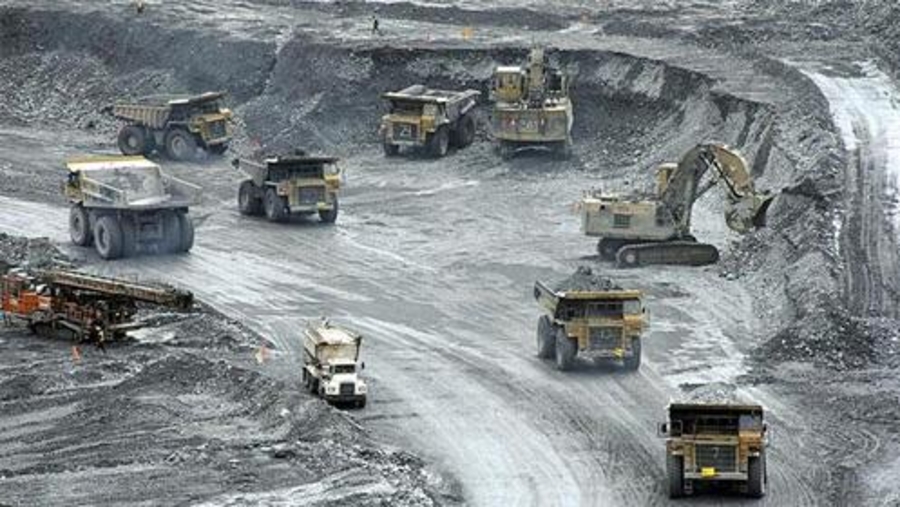
Evidence hearing of coal theft case continues for second day www.gogo.mn
On December 4, Open hearings for inspection and evidence analysis of some state-owned and local companies with property participation in coal mining, sales, transportation, export activities and other goods, works and services procurement activities started.
Yesterday, a total of 22 witnesses were called, but 17 of them were given notices, while 5 witnesses could not be contacted. 12 witnesses were present, one of whom was accompanied by a lawyer. One of the witnesses stated in writing that he would not be able to participate and the 6 witnesses did not appear for an unknown reason.
On December 5, the public hearing to analyze the evidence continues for the second day. On today’s hearing:
Coal sales activities "Tavantolgoi" JSC; Hear expert opinions and auditors' reports on inspections and inspections carried out by authorized organizations in "Tavantolgoi" JSC, as well as the measures taken as a result of them, present the necessary written evidence, ask questions and get answers from the relevant witnesses, get comments from witnesses, experts, and reviewers. A total of 168 witnesses were called in connection with the agenda of the day.
Currently, the certificates of land ownership violated the land law in Khanbogd soum, Umnugovi province are presented.
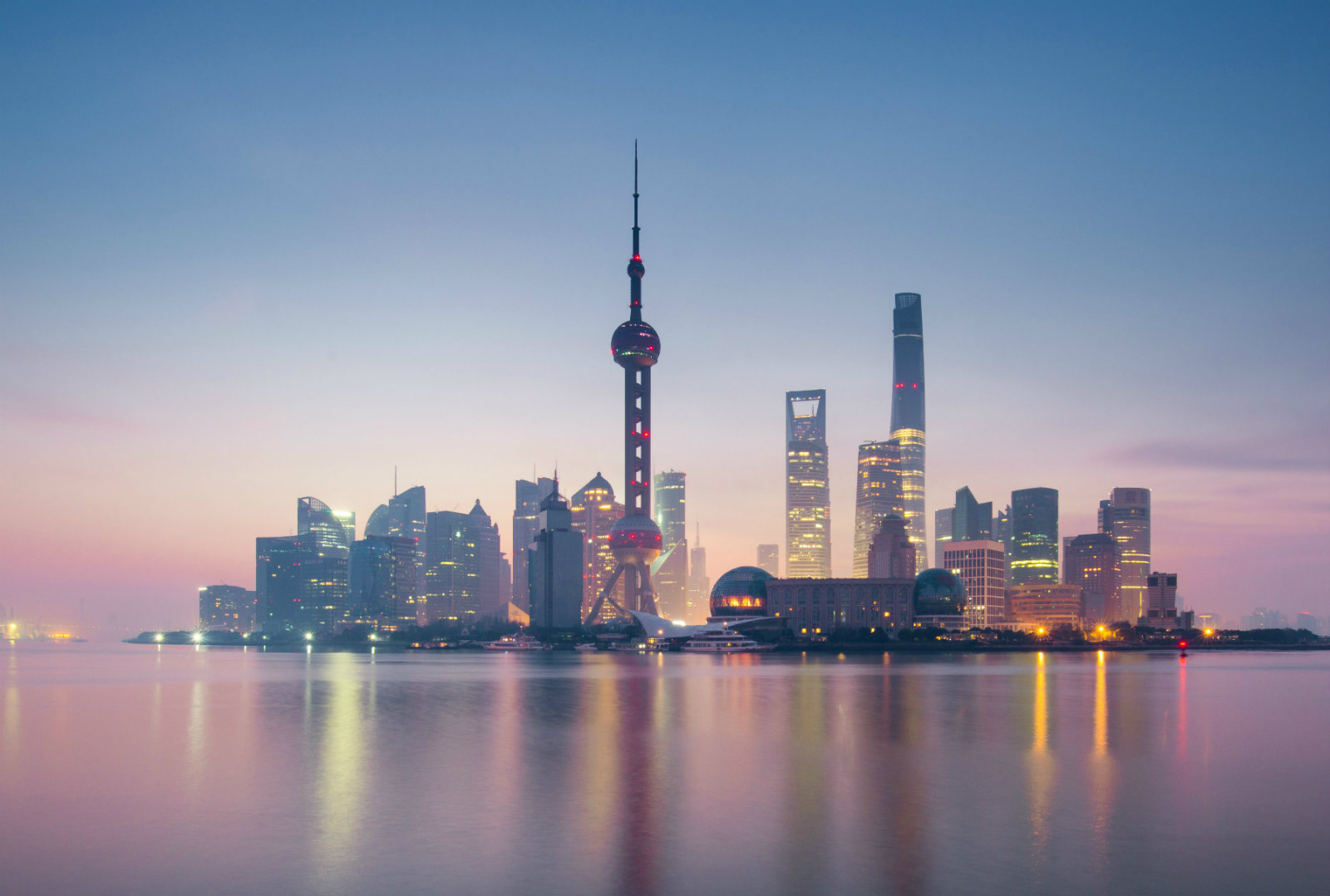
Successful Hosting of Mongolian Capital Markets Day 2023 at SSE www.english.sse.com.cn
Recently, the Shanghai Stock Exchange (SSE) and the Mongolian Stock Exchange (MSE) successfully organized the Mongolian Capital Markets Day 2023 at the SSE. The event was attended by T. Tserenbadral, Vice Chairman of the Financial Regulatory Commission of Mongolia, and D. Bold, Consul General of Mongolia in Shanghai, who delivered speeches. Senior representatives from the MSE and listed companies, securities firms, and investment institutions of the Mongolian capital market made in-depth presentations to over 60 institutional investors from China's capital market, covering topics such as Mongolia's economy, capital market investments, and listed companies.
In recent years, China and Mongolia have continuously strengthened economic communication and cooperation. In June this year, the SSE and the MSE signed a Memorandum of Understanding on cooperation under the witness of the two countries' prime ministers, which further deepened the cooperation between the two capital markets, providing a solid foundation for supporting the Belt and Road Initiative. Following the online edition of the Mongolian Capital Markets Day 2021, this event provided another significant opportunity for Chinese institutional investors to gain a deeper understanding of the Mongolian capital market through the communication platform provided by the SSE.
Moving forward, under the unified deployment of the China Securities Regulatory Commission, the SSE will continue to deepen high-standard institutional opening up, explore multi-dimensional cooperation mechanisms with the Mongolian capital market, strengthen bilateral cooperation, explore diversified development, and continuously enhance the forms and deepen the content of cooperation.
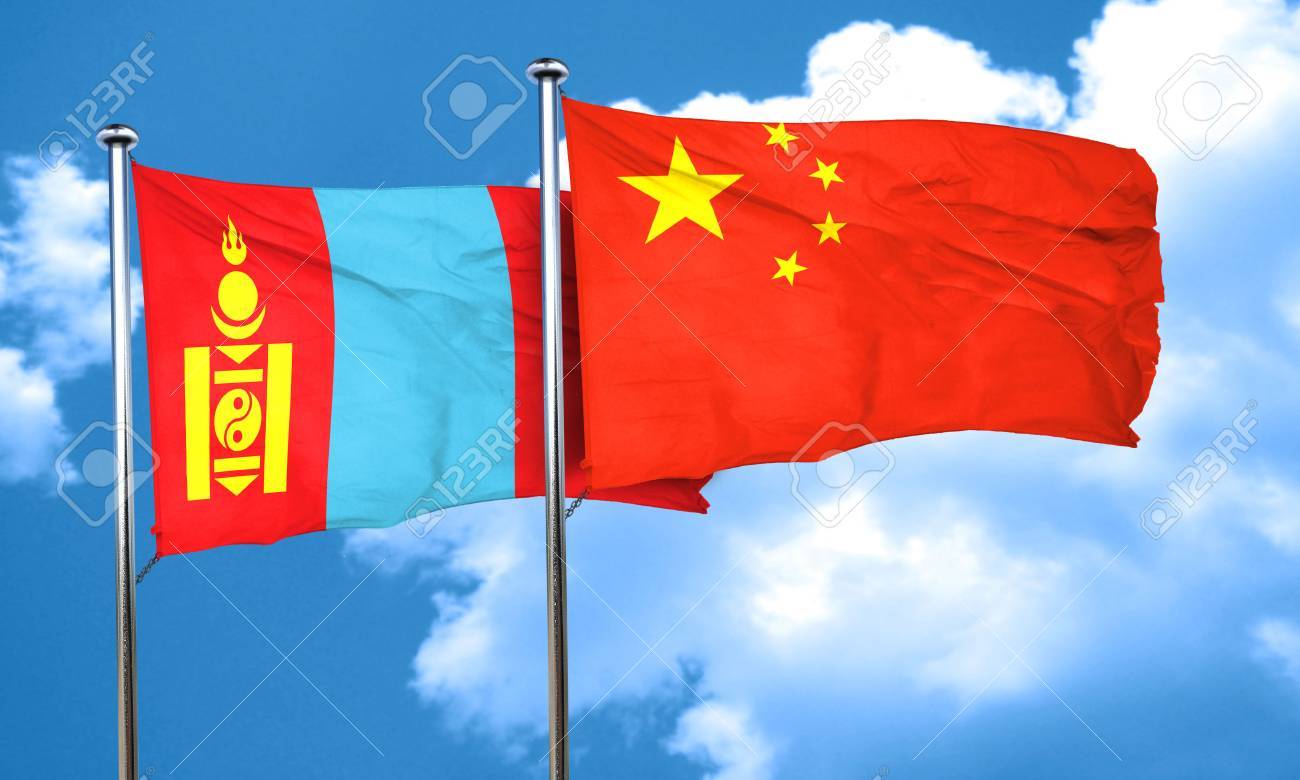
Mongolian delegation pays working visit to China www.akipress.com
The Mongolian delegation led by Chairman of the Standing Committee on Security and Foreign Policy Enkh-Amgalan Byambasuren, is paying a working visit to China at the invitation of the Foreign Affairs Committee of National People's Congress.
Deputy Chairman of the NPC Foreign Affairs Committee Fu Ziying received the Mongolian delegation on December 4, Montsame reported.
Chairman of the Standing Committee B. Enkh-Amgalan noted that friendly relations and mutually beneficial cooperation between Mongolia and China have been developing rapidly in recent years. He added that increasing frequency of high and highest-level visits have an important impact on enhancing political mutual trust and strengthening friendship between the two countries.
The Chairman expressed gratitude for inviting representatives of the Standing Committee on Security and Foreign Policy of Mongolia on the occasion of the 75th anniversary of the diplomatic relations between Mongolia and China and for intensifying the regular inter-parliamentary meeting mechanism.
Chairman B. Enkh-Amgalan invited the relevant leaders and researchers from the Chinese side to participate in the World Forum for Sustainable Development 2024, to be organized in Mongolia.
Deputy Chairman Fu Ziying expressed satisfaction with the development of relations and cooperation between the legislative bodies of the two countries and affirmed its commitment to further strengthening friendly relations between Mongolia and China.
Fu Ziying expressed his contentment that foreign trade has doubled since the establishment of the comprehensive strategic partnership between Mongolia and China along with the increased frequency of reciprocal high and highest-level visits.
The sides exchanged views on the 5th meeting of the inter-parliamentary regular consultation which is to discuss the commemoration of the 75th anniversary of the diplomatic relations between Mongolia and China and the 10th anniversary of the establishment of a permanent cooperation mechanism between the Mongolian Parliament and the Chinese National People's Congress in 2024 and other issues.
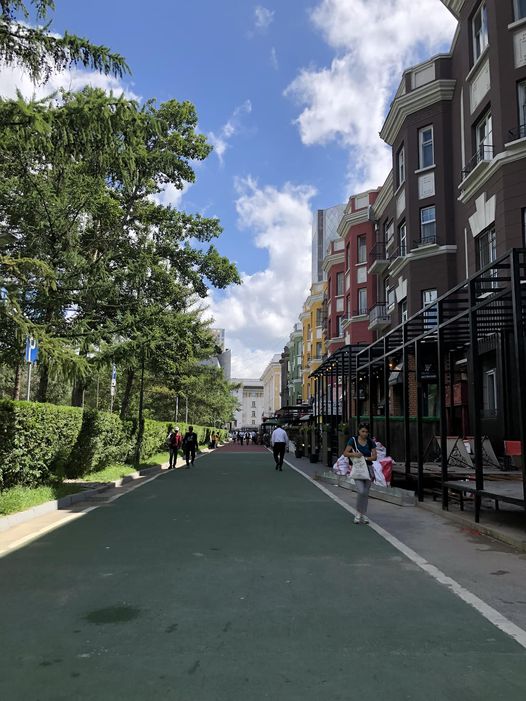
Global Fund to Provide USD 15 Million to Mongolia in 2024-2026 www.montsame.mn
The Global Fund to Fight AIDS, Tuberculosis, and Malaria will provide USD 15 million to Mongolia for the fight against AIDS and Tuberculosis in 2024-2026. Minister of Health S. Chinzorig has met with Global Fund Country Manager for Mongolia Allan Nfamba to discuss the progress of ongoing projects and the new financing method for the projects to be implemented.
The Minister thanked the Global Fund to Fight AIDS, Tuberculosis, and Malaria, a major partner in the health sector, for consistent support to Mongolia and close cooperation.
More than 100 countries of the world are fighting AIDS, tuberculosis, and malaria with financial support from the Global Fund, and since 2003, Mongolia implemented eight projects at the national level.
“Over the past twenty years, eight projects were successfully implemented with the financial support of the Fund, resulting in keeping the spread of AIDS at a low level in our country, completely preventing mother-to-child transmission, improving tuberculosis treatment and diagnosis, decentralizing tuberculosis care, and improving its accessibility,” noted Health Minister Chingzorig. He expressed appreciation to the Global Fund for its contribution to the implementation of comprehensive programs aimed at creating a healthy living environment for Mongolian people by supporting the expansion of health infrastructure, provision of necessary drugs, and encouraging community-based prevention and treatment approaches.
During the meeting, the parties expressed their views on performance-based funding for the activities and interventions targeted at the risk groups under the AIDS project to be implemented in 2024-2026.
Allan Nfamba, on behalf of the Global Fund, thanked the Government of Mongolia for its effective cooperation over the past 20 years and pointed out that while the investments made by the world's countries in the health sector have been decreasing in the past two or three years, this indicator has been steadily increasing in Mongolia.
Since the support of the Global Fund had an impact on reducing the spread and death of AIDS and tuberculosis, which is important for every citizen of Mongolia, the Fund considered it appropriate to continue the project, underscored Country Manager Allan Nfamba.

“The Mongol Khan” Fully Booked at Every Performance at London Coliseum www.montsame.mn
On the occasion of the 60th anniversary of the establishment of diplomatic relations between Mongolia and the United Kingdom of Great Britain and Northern Ireland, the epic theatrical spectacle "The Mongol Khan", directed by B. Baatar and based on an earlier play "The Throne without the Seal" written by renowned Mongolian writer Lkhagvasuren Bavuu, was staged at the London Coliseum from November 17 to December 2, 2023
"The Mongol Khan" was staged 17 times over 14 days, and a total of 40,000 people saw the spectacle, featuring over 70 performers, original music, puppetry, elaborate sets, and costumes inspired by traditional nomadic culture. It received high praise from the spectators, international media, and critics.
The theatrical play "The Mongol Khan", fully booked at every performance and additional performances announced upon request contributed to advancing the sixty-year history of Mongolia-UK cultural ties to a new level, but also raised Mongolia's reputation internationally and opened a new page in the history of culture and art.
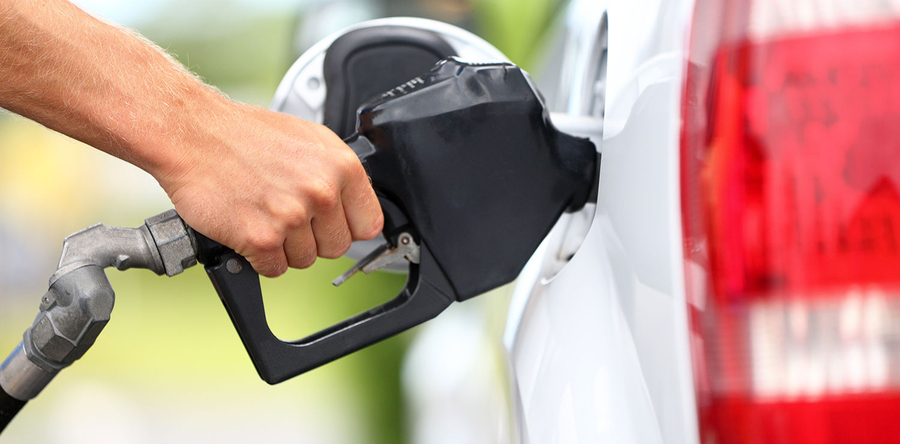
J.Ganbaatar: Fuel supply is normal and increase in domestic consumption caused shortage www.gogo.mn
Sh.Adishaa, Member of Parliament: How to solve the shortage of fuel? The government should grant special permits for fuel import to citizens and enterprises. The government will solve this problem by working in many ways to get rid of the shortage of fuel.
J.Ganbaatar, Minister of Mining and Heavy Industry: Fuel supply from Russia is running normally. Between 1-25 November, 102 thousand tons of fuel were imported which is 45 thousand tons more than last year. Mongolia consumes 3000 wagons of fuel per month. It is still being supplied in excess of this amount.
Domestic consumption increased due to increased exports of mining products. Four Mongolian companies are supplying winter fuel from Russia. For example, coal exports currently reach 62 million tons. This means that the consumption of diesel fuel has increased dramatically.
As a result of reserving 140,000 tons of fuel last August and September, the 20-day supply shortage has been resolved. The decision of the Government of the Russian Federation on the establishment of fuel restrictions was suddenly issued on September 21, and the situation hasn't been normal since.
The most important requirement for fuel import licensing is safety. The government is working on getting fuel used in the mining industry from China, not only from Russia. China itself is a fuel importing country, and it is unable to supply as much as we want.

China-Mongolia border port handles nearly 1.33 mln travelers in Jan-Nov www.xinhuanet.com
Erenhot, the largest land port on the China-Mongolia border, handled nearly 1.33 million inbound and outbound travelers in the first 11 months of this year, reaching a peak of over 8,870 people in a single day, local authorities said.
During this period, the land port handled some 169,000 vehicles, according to the port's entry-exit border inspection station.
Customs clearance services for passenger traffic at the Erenhot highway port, located on the border of north China's Inner Mongolia Autonomous Region, resumed on Jan. 8, and China-Mongolia international passenger train services resumed on Aug. 30.
In recent years, bilateral trade between China and Mongolia has seen a steady rise in scale.
In 2022, bilateral trade totaled 12.2 billion U.S. dollars in value, up 34 percent year on year. It soared 62.6 percent year on year in the first six months of 2023, maintaining a strong growth momentum, according to official data.

Skies in Mongolia mysteriously turn blood-red. Pictures show eerie phenomena www.indiatoday.in
In an extraordinary celestial display, the skies over Mongolia turned deep, blood-red as the country experienced one of the rarest auroral events on Friday and early Saturday.
The intense colouration is attributed to the initial impact of a significant solar storm that collided with Earth, creating a spectacle that left onlookers in awe.
The phenomenon, known as an aurora, typically occurs closer to the poles and is often green in colour. However, the auroras seen in Mongolia were of a striking crimson hue, a rarity caused by the interaction of solar particles with oxygen at high altitudes — over 241 kilometres above the Earth's surface, where the atmosphere is much thinner.
This particular shade of red is considered the most uncommon colour of the Northern Lights, or Aurora Borealis, and its appearance is closely linked to periods of intense solar activity.
The ongoing solar storm responsible for this event was the result of multiple coronal mass ejections (CMEs) from the Sun, which occurred on November 27, 2023. These CMEs sent a barrage of high-energy particles hurtling towards Earth, with the first wave reaching our planet late on November 29.
The red auroras are a consequence of these solar particles colliding with oxygen molecules at higher altitudes. At such great heights, the density of oxygen is lower, and the collisions occur less frequently, resulting in the emission of red light rather than the more common green. This process is akin to the way neon lights operate, with excited gas atoms releasing photons of light when they return to their ground state.
Historically, red auroras have been documented during some of the most powerful geomagnetic storms, such as the Carrington Event of 1859, which remains the most intense solar storm on record. During that event, red auroras were reported as far south as the Caribbean and Mexico, with the skies so bright that birds began to sing, mistaking the illuminated night for morning.
The occurrence of the red aurora in Mongolia has provided scientists with a unique opportunity to study the effects of solar storms at lower latitudes. While the sight may be mesmerizing, it also serves as a reminder of the Sun's immense power and the potential impact of solar weather on our technologically dependent society.
- «
- 1
- 2
- 3
- 4
- 5
- 6
- 7
- 8
- 9
- 10
- 11
- 12
- 13
- 14
- 15
- 16
- 17
- 18
- 19
- 20
- 21
- 22
- 23
- 24
- 25
- 26
- 27
- 28
- 29
- 30
- 31
- 32
- 33
- 34
- 35
- 36
- 37
- 38
- 39
- 40
- 41
- 42
- 43
- 44
- 45
- 46
- 47
- 48
- 49
- 50
- 51
- 52
- 53
- 54
- 55
- 56
- 57
- 58
- 59
- 60
- 61
- 62
- 63
- 64
- 65
- 66
- 67
- 68
- 69
- 70
- 71
- 72
- 73
- 74
- 75
- 76
- 77
- 78
- 79
- 80
- 81
- 82
- 83
- 84
- 85
- 86
- 87
- 88
- 89
- 90
- 91
- 92
- 93
- 94
- 95
- 96
- 97
- 98
- 99
- 100
- 101
- 102
- 103
- 104
- 105
- 106
- 107
- 108
- 109
- 110
- 111
- 112
- 113
- 114
- 115
- 116
- 117
- 118
- 119
- 120
- 121
- 122
- 123
- 124
- 125
- 126
- 127
- 128
- 129
- 130
- 131
- 132
- 133
- 134
- 135
- 136
- 137
- 138
- 139
- 140
- 141
- 142
- 143
- 144
- 145
- 146
- 147
- 148
- 149
- 150
- 151
- 152
- 153
- 154
- 155
- 156
- 157
- 158
- 159
- 160
- 161
- 162
- 163
- 164
- 165
- 166
- 167
- 168
- 169
- 170
- 171
- 172
- 173
- 174
- 175
- 176
- 177
- 178
- 179
- 180
- 181
- 182
- 183
- 184
- 185
- 186
- 187
- 188
- 189
- 190
- 191
- 192
- 193
- 194
- 195
- 196
- 197
- 198
- 199
- 200
- 201
- 202
- 203
- 204
- 205
- 206
- 207
- 208
- 209
- 210
- 211
- 212
- 213
- 214
- 215
- 216
- 217
- 218
- 219
- 220
- 221
- 222
- 223
- 224
- 225
- 226
- 227
- 228
- 229
- 230
- 231
- 232
- 233
- 234
- 235
- 236
- 237
- 238
- 239
- 240
- 241
- 242
- 243
- 244
- 245
- 246
- 247
- 248
- 249
- 250
- 251
- 252
- 253
- 254
- 255
- 256
- 257
- 258
- 259
- 260
- 261
- 262
- 263
- 264
- 265
- 266
- 267
- 268
- 269
- 270
- 271
- 272
- 273
- 274
- 275
- 276
- 277
- 278
- 279
- 280
- 281
- 282
- 283
- 284
- 285
- 286
- 287
- 288
- 289
- 290
- 291
- 292
- 293
- 294
- 295
- 296
- 297
- 298
- 299
- 300
- 301
- 302
- 303
- 304
- 305
- 306
- 307
- 308
- 309
- 310
- 311
- 312
- 313
- 314
- 315
- 316
- 317
- 318
- 319
- 320
- 321
- 322
- 323
- 324
- 325
- 326
- 327
- 328
- 329
- 330
- 331
- 332
- 333
- 334
- 335
- 336
- 337
- 338
- 339
- 340
- 341
- 342
- 343
- 344
- 345
- 346
- 347
- 348
- 349
- 350
- 351
- 352
- 353
- 354
- 355
- 356
- 357
- 358
- 359
- 360
- 361
- 362
- 363
- 364
- 365
- 366
- 367
- 368
- 369
- 370
- 371
- 372
- 373
- 374
- 375
- 376
- 377
- 378
- 379
- 380
- 381
- 382
- 383
- 384
- 385
- 386
- 387
- 388
- 389
- 390
- 391
- 392
- 393
- 394
- 395
- 396
- 397
- 398
- 399
- 400
- 401
- 402
- 403
- 404
- 405
- 406
- 407
- 408
- 409
- 410
- 411
- 412
- 413
- 414
- 415
- 416
- 417
- 418
- 419
- 420
- 421
- 422
- 423
- 424
- 425
- 426
- 427
- 428
- 429
- 430
- 431
- 432
- 433
- 434
- 435
- 436
- 437
- 438
- 439
- 440
- 441
- 442
- 443
- 444
- 445
- 446
- 447
- 448
- 449
- 450
- 451
- 452
- 453
- 454
- 455
- 456
- 457
- 458
- 459
- 460
- 461
- 462
- 463
- 464
- 465
- 466
- 467
- 468
- 469
- 470
- 471
- 472
- 473
- 474
- 475
- 476
- 477
- 478
- 479
- 480
- 481
- 482
- 483
- 484
- 485
- 486
- 487
- 488
- 489
- 490
- 491
- 492
- 493
- 494
- 495
- 496
- 497
- 498
- 499
- 500
- 501
- 502
- 503
- 504
- 505
- 506
- 507
- 508
- 509
- 510
- 511
- 512
- 513
- 514
- 515
- 516
- 517
- 518
- 519
- 520
- 521
- 522
- 523
- 524
- 525
- 526
- 527
- 528
- 529
- 530
- 531
- 532
- 533
- 534
- 535
- 536
- 537
- 538
- 539
- 540
- 541
- 542
- 543
- 544
- 545
- 546
- 547
- 548
- 549
- 550
- 551
- 552
- 553
- 554
- 555
- 556
- 557
- 558
- 559
- 560
- 561
- 562
- 563
- 564
- 565
- 566
- 567
- 568
- 569
- 570
- 571
- 572
- 573
- 574
- 575
- 576
- 577
- 578
- 579
- 580
- 581
- 582
- 583
- 584
- 585
- 586
- 587
- 588
- 589
- 590
- 591
- 592
- 593
- 594
- 595
- 596
- 597
- 598
- 599
- 600
- 601
- 602
- 603
- 604
- 605
- 606
- 607
- 608
- 609
- 610
- 611
- 612
- 613
- 614
- 615
- 616
- 617
- 618
- 619
- 620
- 621
- 622
- 623
- 624
- 625
- 626
- 627
- 628
- 629
- 630
- 631
- 632
- 633
- 634
- 635
- 636
- 637
- 638
- 639
- 640
- 641
- 642
- 643
- 644
- 645
- 646
- 647
- 648
- 649
- 650
- 651
- 652
- 653
- 654
- 655
- 656
- 657
- 658
- 659
- 660
- 661
- 662
- 663
- 664
- 665
- 666
- 667
- 668
- 669
- 670
- 671
- 672
- 673
- 674
- 675
- 676
- 677
- 678
- 679
- 680
- 681
- 682
- 683
- 684
- 685
- 686
- 687
- 688
- 689
- 690
- 691
- 692
- 693
- 694
- 695
- 696
- 697
- 698
- 699
- 700
- 701
- 702
- 703
- 704
- 705
- 706
- 707
- 708
- 709
- 710
- 711
- 712
- 713
- 714
- 715
- 716
- 717
- 718
- 719
- 720
- 721
- 722
- 723
- 724
- 725
- 726
- 727
- 728
- 729
- 730
- 731
- 732
- 733
- 734
- 735
- 736
- 737
- 738
- 739
- 740
- 741
- 742
- 743
- 744
- 745
- 746
- 747
- 748
- 749
- 750
- 751
- 752
- 753
- 754
- 755
- 756
- 757
- 758
- 759
- 760
- 761
- 762
- 763
- 764
- 765
- 766
- 767
- 768
- 769
- 770
- 771
- 772
- 773
- 774
- 775
- 776
- 777
- 778
- 779
- 780
- 781
- 782
- 783
- 784
- 785
- 786
- 787
- 788
- 789
- 790
- 791
- 792
- 793
- 794
- 795
- 796
- 797
- 798
- 799
- 800
- 801
- 802
- 803
- 804
- 805
- 806
- 807
- 808
- 809
- 810
- 811
- 812
- 813
- 814
- 815
- 816
- 817
- 818
- 819
- 820
- 821
- 822
- 823
- 824
- 825
- 826
- 827
- 828
- 829
- 830
- 831
- 832
- 833
- 834
- 835
- 836
- 837
- 838
- 839
- 840
- 841
- 842
- 843
- 844
- 845
- 846
- 847
- 848
- 849
- 850
- 851
- 852
- 853
- 854
- 855
- 856
- 857
- 858
- 859
- 860
- 861
- 862
- 863
- 864
- 865
- 866
- 867
- 868
- 869
- 870
- 871
- 872
- 873
- 874
- 875
- 876
- 877
- 878
- 879
- 880
- 881
- 882
- 883
- 884
- 885
- 886
- 887
- 888
- 889
- 890
- 891
- 892
- 893
- 894
- 895
- 896
- 897
- 898
- 899
- 900
- 901
- 902
- 903
- 904
- 905
- 906
- 907
- 908
- 909
- 910
- 911
- 912
- 913
- 914
- 915
- 916
- 917
- 918
- 919
- 920
- 921
- 922
- 923
- 924
- 925
- 926
- 927
- 928
- 929
- 930
- 931
- 932
- 933
- 934
- 935
- 936
- 937
- 938
- 939
- 940
- 941
- 942
- 943
- 944
- 945
- 946
- 947
- 948
- 949
- 950
- 951
- 952
- 953
- 954
- 955
- 956
- 957
- 958
- 959
- 960
- 961
- 962
- 963
- 964
- 965
- 966
- 967
- 968
- 969
- 970
- 971
- 972
- 973
- 974
- 975
- 976
- 977
- 978
- 979
- 980
- 981
- 982
- 983
- 984
- 985
- 986
- 987
- 988
- 989
- 990
- 991
- 992
- 993
- 994
- 995
- 996
- 997
- 998
- 999
- 1000
- 1001
- 1002
- 1003
- 1004
- 1005
- 1006
- 1007
- 1008
- 1009
- 1010
- 1011
- 1012
- 1013
- 1014
- 1015
- 1016
- 1017
- 1018
- 1019
- 1020
- 1021
- 1022
- 1023
- 1024
- 1025
- 1026
- 1027
- 1028
- 1029
- 1030
- 1031
- 1032
- 1033
- 1034
- 1035
- 1036
- 1037
- 1038
- 1039
- 1040
- 1041
- 1042
- 1043
- 1044
- 1045
- 1046
- 1047
- 1048
- 1049
- 1050
- 1051
- 1052
- 1053
- 1054
- 1055
- 1056
- 1057
- 1058
- 1059
- 1060
- 1061
- 1062
- 1063
- 1064
- 1065
- 1066
- 1067
- 1068
- 1069
- 1070
- 1071
- 1072
- 1073
- 1074
- 1075
- 1076
- 1077
- 1078
- 1079
- 1080
- 1081
- 1082
- 1083
- 1084
- 1085
- 1086
- 1087
- 1088
- 1089
- 1090
- 1091
- 1092
- 1093
- 1094
- 1095
- 1096
- 1097
- 1098
- 1099
- 1100
- 1101
- 1102
- 1103
- 1104
- 1105
- 1106
- 1107
- 1108
- 1109
- 1110
- 1111
- 1112
- 1113
- 1114
- 1115
- 1116
- 1117
- 1118
- 1119
- 1120
- 1121
- 1122
- 1123
- 1124
- 1125
- 1126
- 1127
- 1128
- 1129
- 1130
- 1131
- 1132
- 1133
- 1134
- 1135
- 1136
- 1137
- 1138
- 1139
- 1140
- 1141
- 1142
- 1143
- 1144
- 1145
- 1146
- 1147
- 1148
- 1149
- 1150
- 1151
- 1152
- 1153
- 1154
- 1155
- 1156
- 1157
- 1158
- 1159
- 1160
- 1161
- 1162
- 1163
- 1164
- 1165
- 1166
- 1167
- 1168
- 1169
- 1170
- 1171
- 1172
- 1173
- 1174
- 1175
- 1176
- 1177
- 1178
- 1179
- 1180
- 1181
- 1182
- 1183
- 1184
- 1185
- 1186
- 1187
- 1188
- 1189
- 1190
- 1191
- 1192
- 1193
- 1194
- 1195
- 1196
- 1197
- 1198
- 1199
- 1200
- 1201
- 1202
- 1203
- 1204
- 1205
- 1206
- 1207
- 1208
- 1209
- 1210
- 1211
- 1212
- 1213
- 1214
- 1215
- 1216
- 1217
- 1218
- 1219
- 1220
- 1221
- 1222
- 1223
- 1224
- 1225
- 1226
- 1227
- 1228
- 1229
- 1230
- 1231
- 1232
- 1233
- 1234
- 1235
- 1236
- 1237
- 1238
- 1239
- 1240
- 1241
- 1242
- 1243
- 1244
- 1245
- 1246
- 1247
- 1248
- 1249
- 1250
- 1251
- 1252
- 1253
- 1254
- 1255
- 1256
- 1257
- 1258
- 1259
- 1260
- 1261
- 1262
- 1263
- 1264
- 1265
- 1266
- 1267
- 1268
- 1269
- 1270
- 1271
- 1272
- 1273
- 1274
- 1275
- 1276
- 1277
- 1278
- 1279
- 1280
- 1281
- 1282
- 1283
- 1284
- 1285
- 1286
- 1287
- 1288
- 1289
- 1290
- 1291
- 1292
- 1293
- 1294
- 1295
- 1296
- 1297
- 1298
- 1299
- 1300
- 1301
- 1302
- 1303
- 1304
- 1305
- 1306
- 1307
- 1308
- 1309
- 1310
- 1311
- 1312
- 1313
- 1314
- 1315
- 1316
- 1317
- 1318
- 1319
- 1320
- 1321
- 1322
- 1323
- 1324
- 1325
- 1326
- 1327
- 1328
- 1329
- 1330
- 1331
- 1332
- 1333
- 1334
- 1335
- 1336
- 1337
- 1338
- 1339
- 1340
- 1341
- 1342
- 1343
- 1344
- 1345
- 1346
- 1347
- 1348
- 1349
- 1350
- 1351
- 1352
- 1353
- 1354
- 1355
- 1356
- 1357
- 1358
- 1359
- 1360
- 1361
- 1362
- 1363
- 1364
- 1365
- 1366
- 1367
- 1368
- 1369
- 1370
- 1371
- 1372
- 1373
- 1374
- 1375
- 1376
- 1377
- 1378
- 1379
- 1380
- 1381
- 1382
- 1383
- 1384
- 1385
- 1386
- 1387
- 1388
- 1389
- 1390
- 1391
- 1392
- 1393
- 1394
- 1395
- 1396
- 1397
- 1398
- 1399
- 1400
- 1401
- 1402
- 1403
- 1404
- 1405
- 1406
- 1407
- 1408
- 1409
- 1410
- 1411
- 1412
- 1413
- 1414
- 1415
- 1416
- 1417
- 1418
- 1419
- 1420
- 1421
- 1422
- 1423
- 1424
- 1425
- 1426
- 1427
- 1428
- 1429
- 1430
- 1431
- 1432
- 1433
- 1434
- 1435
- 1436
- 1437
- 1438
- 1439
- 1440
- 1441
- 1442
- 1443
- 1444
- 1445
- 1446
- 1447
- 1448
- 1449
- 1450
- 1451
- 1452
- 1453
- 1454
- 1455
- 1456
- 1457
- 1458
- 1459
- 1460
- 1461
- 1462
- 1463
- 1464
- 1465
- 1466
- 1467
- 1468
- 1469
- 1470
- 1471
- 1472
- 1473
- 1474
- 1475
- 1476
- 1477
- 1478
- 1479
- 1480
- 1481
- 1482
- 1483
- 1484
- 1485
- 1486
- 1487
- 1488
- 1489
- 1490
- 1491
- 1492
- 1493
- 1494
- 1495
- 1496
- 1497
- 1498
- 1499
- 1500
- 1501
- 1502
- 1503
- 1504
- 1505
- 1506
- 1507
- 1508
- 1509
- 1510
- 1511
- 1512
- 1513
- 1514
- 1515
- 1516
- 1517
- 1518
- 1519
- 1520
- 1521
- 1522
- 1523
- 1524
- 1525
- 1526
- 1527
- 1528
- 1529
- 1530
- 1531
- 1532
- 1533
- 1534
- 1535
- 1536
- 1537
- 1538
- 1539
- 1540
- 1541
- 1542
- 1543
- 1544
- 1545
- 1546
- 1547
- 1548
- 1549
- 1550
- 1551
- 1552
- 1553
- 1554
- 1555
- 1556
- 1557
- 1558
- 1559
- 1560
- 1561
- 1562
- 1563
- 1564
- 1565
- 1566
- 1567
- 1568
- 1569
- 1570
- 1571
- 1572
- 1573
- 1574
- 1575
- 1576
- 1577
- 1578
- 1579
- 1580
- 1581
- 1582
- 1583
- 1584
- 1585
- 1586
- 1587
- 1588
- 1589
- 1590
- 1591
- 1592
- 1593
- 1594
- 1595
- 1596
- 1597
- 1598
- 1599
- 1600
- 1601
- 1602
- 1603
- 1604
- 1605
- 1606
- 1607
- 1608
- 1609
- 1610
- 1611
- 1612
- 1613
- 1614
- 1615
- 1616
- 1617
- 1618
- 1619
- 1620
- 1621
- 1622
- 1623
- 1624
- 1625
- 1626
- 1627
- 1628
- 1629
- 1630
- 1631
- 1632
- 1633
- 1634
- 1635
- 1636
- 1637
- 1638
- 1639
- 1640
- 1641
- 1642
- 1643
- 1644
- 1645
- 1646
- 1647
- 1648
- 1649
- 1650
- 1651
- 1652
- 1653
- 1654
- 1655
- 1656
- 1657
- 1658
- 1659
- 1660
- 1661
- 1662
- 1663
- 1664
- 1665
- 1666
- 1667
- 1668
- 1669
- 1670
- 1671
- 1672
- 1673
- 1674
- 1675
- 1676
- 1677
- 1678
- 1679
- 1680
- 1681
- 1682
- 1683
- 1684
- 1685
- 1686
- 1687
- 1688
- 1689
- 1690
- 1691
- 1692
- 1693
- 1694
- »






